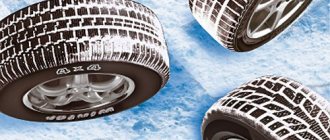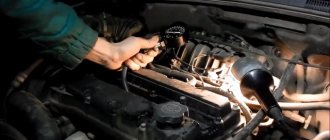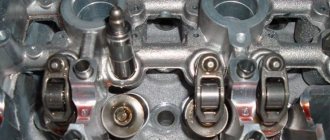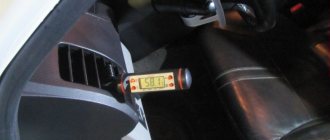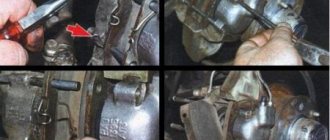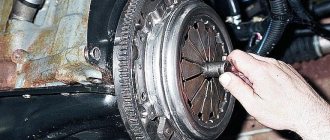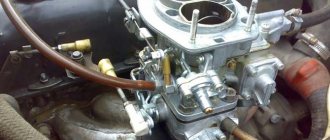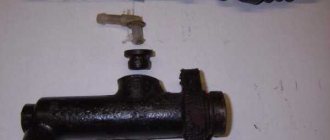Hydrodynamic retarders are much more compact and much lighter than electrodynamic ones. However, at low speeds they are not as effective, although they can work for a long time, because from the moment the hydrodynamic retarder starts working, no fuel enters the engine, and the cooling system is used only to operate the retarder. The braking torque in hydrodynamic retarders can reach up to 4000 Nm, which exceeds the torque of the most powerful engines.
You should also know that the retarder connected to the gearbox is called an integrated retarder, or intarder. With this design, the retarder is not connected to the secondary shaft directly, but through a pair of gears with a gear ratio of approximately 1:2, so the rotor speed is twice as high (which improves braking torque characteristics at low speeds). Some manufacturers use oil in the gearbox housing to operate the intarder, although there are also models with an independent lubrication system.
Another interesting design is the aquatarder. It is installed in front of the engine and is rigidly fixed to its crankshaft. Coolant serves as a lubricant. The advantage is obvious - the heat that is released during braking is sent directly to the engine cooling system. Today, only one of the seven manufacturers present on our market installs aquatarders in their cars, however, the situation may change.
Causes of malfunctions in retarders
As we were told by the technicians involved in maintaining the technical condition and repairing tractors, the most common causes of malfunctions in retarders are:
How does the mountain brake work on a Kamaz?
- Vengr_Sobolev
- 10 October 2012, 19:06
- Iver_Hazov
- 10 October 2012, 19:11
- v
- Vengr_Sobolev
- 10 October 2012, 19:12
- v
Are they installed before the cans?
And in general, if it works, is it effective?
And I didn’t understand. It looks like there is a solenoid there, not air chambers. To control the damper.. collapse the branch
What is a mountain brake
A heavy vehicle cannot do without an auxiliary braking system on mountain roads. The exhaust brake is installed on trucks and buses not only for safety reasons. It extends the life of the main brake.
articles
The engine brake is a special device that turns off the fuel supply. It is installed in the car engine.
During braking, the damper closes the muffler pipe and moves the fuel pump rack. Gasoline is not supplied. The engine stalls, but the crankshaft continues to rotate. The piston tries to push air out of the cylinders. He experiences strong resistance. Because of this, the rotation of the shaft and, accordingly, the drive wheels slows down. The hydraulic retarder consists of two wheels with blades. They are located in parallel. The distance between the wheels is small. There is no hard connection.
One wheel is fixed to the cardan shaft and rotates with it. The second is on the brake housing. It is motionless. The hydraulic brake housing is filled with oil through a special pump. It is accelerated by the blades of a rotating wheel. It flows onto the stationary one and loses speed. Once again falling on the first wheel, the oil slows down its rotation. The braking torque is transmitted to the driving wheels of the car. In an electric braking system, a rotor is connected to a shaft. And the stator windings are placed in the housing.
When voltage is applied to them, an electromagnetic field appears. It does not allow the rotor to rotate at the same speed.
What is a mountain brake
Operating principles of the Kamaz mountain brake
When a heavy machine operates in rough terrain, it constantly has to go downhill using the brake. Since you have to apply the brakes repeatedly during a long descent, tires and brake pad linings quickly become unusable, which leads to a decrease in friction with the brake drum and, as a result, to a decrease in the quality of the braking system. Therefore, Kamaz vehicles are equipped with an additional brake, which reduces wear on the main braking system.
The mountain brake is an auxiliary built-in deceleration system that allows the vehicle to move at low speed. Typically, an additional retarder is installed on trucks and construction equipment. Sometimes an additional retarder is installed on intercity buses operating in mountainous areas. However, the mountain brake is most widely used on domestic KamAZ vehicles.
How does the mountain brake work on KamAZ trucks?
Currently, there are three types of additional retarders: motor, hydraulic and electric. The principle of its operation depends on the type of brake.
So, the engine brake cuts off the fuel supply. It is a damper that closes the muffler pipe and displaces the fuel injection pump rack. The fuel stops flowing, the engine stalls, but the crankshaft continues to work. When trying to push air out of the combustion chamber, the piston encounters significant resistance, as a result of which the movement of the crankshaft and wheels is slowed down.
The hydraulic brake consists of two parallel wheels with blades located at a short distance from each other. One of the wheels is fixed to the brake housing, the other rotates with the cardan. The internal cavity of the brake itself is filled with oil, which is accelerated by the moving blades. Upon contact with the stationary blades, the oil loses speed, thereby slowing down the rotating wheel, and therefore the cardan itself.
The action of the electric mountain brake is based on an electromagnetic field that slows down the rotation of the rotor. The rotor is usually connected to the driveshaft, although it can be installed on any other transmission shaft. The stator windings are fixed to the housing.
The exhaust brake is necessary not only for safety reasons, but also as additional protection against premature wear of the main brake.
Why doesn't the exhaust brake work on my truck? And what is the principle of its operation?
Why doesn't the exhaust brake work on my truck? And what is the principle of its operation?
- Why does the mountain brake always work even though I didn’t turn it on? The miner closed the damper in the muffler - the MMC KAnter 4D33 machine, the engine is choking and smoking. What could be the reason? Please tell me, dear experts.
- Installed on all trucks with engines from 2.5 liters. Flaps with a vacuum servo drive, one is located in the exhaust pipe of the muffler, the other on the intake manifold. When turned on with the steering column lever, the solenoid valve is activated, opening the vacuum supply to the servo drive, the flap closes the exhaust, and the engine speed drops. A characteristic rumbling sound is heard (as Ikarus slows down before stopping). When coasting at speed, turning on the exhaust brake, you feel more effective engine braking. There is simple automation - microswitches are installed on the gas and clutch pedals; when you touch the gas or clutch, the exhaust brake is turned off.
Source: https://nadouchest.ru/kak-rabotaet-gornyj-tormoz-na-kamaze/
From the history of the retarder
The most significant representative in the history of the invention of the retarder is the German company Voith. Attempts to apply the idea of a moderator have been made by the company since the second quarter of the last century, and it received its first order for development in the late 50s from a large manufacturer of railway locomotives. After the successful completion of the project in 1961, Voith created its own division, which to this day specializes exclusively in the production of retarders.
Seven years later, Voith develops the first retarders for wheeled vehicles at the request of the founder of Setra. In this way, Setra sought to significantly improve the safety level of passenger transportation with its buses. The new development from Voith lived up to expectations and began to gain popularity among other automakers. By the end of the last century, drivers of heavy vehicles not only had a general idea of what a retarder is on trucks and buses, but also actively used the unit in their daily work.
Mountain brake operating principle
» Miscellaneous » Exhaust brake operating principle
A heavy vehicle cannot do without an auxiliary braking system on mountain roads. The exhaust brake is installed on trucks and buses not only for safety reasons. It extends the life of the main brake.
Car device
Retarders of various designs and operating principles can be used as an auxiliary braking system for a vehicle. A retarder is a device designed to reduce the speed of a vehicle without using the service braking system.
The use of retarder brakes helps prevent overloading of the working brake system and its overheating due to prolonged intensive work when driving on a long descent. In such a situation, the driver has to constantly slow down, since the car tends to accelerate downhill, and must be held with the brakes.
Prolonged load on the friction brake system leads to its overheating and premature wear. In practice, during long descents, drivers have to periodically stop the car and wait until the brakes cool down. And if the car is often driven in mountainous areas, then the cost of repair and maintenance of brakes increases sharply.
For these reasons, retarders are used as an auxiliary braking system.
The word "retarder" translated into English means "retarder", which is why retarder brakes are sometimes called retarders. However, the term “retarder” is more often applied to special devices that are installed on the drive shafts of the engine or transmission in order to slow down the vehicle when necessary. Retarder brakes, which use the braking properties of the engine in compressor mode, are more often called simply an auxiliary brake, or a mountain brake.
Car device
Retarders of various designs and operating principles can be used as an auxiliary braking system for a vehicle. A retarder is a device designed to reduce the speed of a vehicle without using the service braking system.
The use of retarder brakes helps prevent overloading of the working brake system and its overheating due to prolonged intensive work when driving on a long descent. In such a situation, the driver has to constantly slow down, since the car tends to accelerate downhill, and must be held with the brakes. Prolonged load on the friction brake system leads to its overheating and premature wear. In practice, during long descents, drivers have to periodically stop the car and wait until the brakes cool down. And if the car is often driven in mountainous areas, then the cost of repair and maintenance of brakes increases sharply. For these reasons, retarders are used as an auxiliary braking system.
The word "retarder" translated into English means "retarder", which is why retarder brakes are sometimes called retarders. However, the term “retarder” is more often applied to special devices that are installed on the drive shafts of the engine or transmission in order to slow down the vehicle when necessary. Retarder brakes, which use the braking properties of the engine in compressor mode, are more often called simply an auxiliary brake, or a mountain brake.
Hydraulic, electric, compressor and aerodynamic brake mechanisms are usually used as retarder brakes on vehicles. Aerodynamic retarders are sometimes used on high-speed and racing cars. They are made in the form of special shields, flaps and parachutes, which increase the force of air resistance, and are used for emergency braking of cars moving at high speed. The use of conventional braking systems on such vehicles is not always effective and safe.
In addition, there are retarder brakes that are capable of recovering (accumulating) energy during braking and then returning it during acceleration. These, for example, include inertial retarders with massive flywheels. When a car brakes, the energy of its movement is transferred through special devices to the flywheel, which spins up. In the future, the energy of the rotating flywheel can be used to accelerate the car without significant fuel consumption.
The simplest example of using a retarder is engine braking - in this case, the fuel supply to the cylinders is stopped (or reduced), switching the engine to compressor mode. As a result, the engine begins to resist the movement, slowing down the car. If the retarder is integrated with the gearbox, it is usually called an “intarder”, i.e. integrated into the gearbox.
***
Hydraulic retarder
The hydraulic (hydrodynamic) brake retarder is structurally a fluid coupling, one of the wheels of which is fixedly fixed, and the other is mounted on the transmission shaft (behind the gearbox) and rotates with the shaft. When the retarder is turned on, its body and the space between the wheel blades are filled with liquid. The centrifugal force that arises when the rotor rotates tends to displace fluid to the outer part of the housing, while the stator impeller prevents this by changing the direction of fluid flow in such a way that, acting on the rotor blades, it has a retarding effect and slows it down. In the off state, when there is no liquid in the moderator housing, the blades rotate freely and practically do not interact. The braking torque of a hydraulic retarder depends on the speed of rotation of the impeller and the amount of fluid supplied.
Hydraulic retarder brakes have a large mass and are ineffective at low vehicle speeds.
When a hydraulic retarder operates, the oil can become very hot, so special devices are used to cool it. One type of hydraulic retarder, called an aquatarder, is installed at the front of the engine and uses fluid from the engine cooling system as its working fluid. Such a retarder, the operating principle of which is no different from any other hydrodynamic device, does not require forced cooling, which significantly simplifies its design.
***
An electric (electrodynamic) brake retarder is usually located behind the gearbox. It is a massive steel disk (rotor) mounted on a transmission shaft and rotating with the shaft relative to stationary electromagnets that form the stator. Braking of a car occurs due to the work that is spent on overcoming the magnetic interaction between the rotating disk and electromagnets. After turning on the retarder, current from the battery flows to the electrical windings of the stator, creating a magnetic field in which the rotor rotates. The resulting eddy currents create fields opposite to those generated by the stator, preventing the rotor from rotating.
Electric retarders are highly effective and provide smooth braking of the vehicle. However, they are heavy, expensive to manufacture and consume additional battery energy.
As in hydrodynamic retarders, a significant amount of heat is generated during the operation of electrodynamic retarders, so they have to be cooled by an air flow created by a special impeller. In addition, electrodynamic retarders are equipped with a current limiting system in case of overheating.
***
Compressor retarder
A compressor retarder is an engine brake that uses exhaust back pressure when the engine is running in compressor mode. The engine brake mechanism is installed in the exhaust pipe of the muffler. A damper and a drive lever are attached to the shaft in the mechanism body. To create back pressure when the car is braking, the exhaust pipe of the muffler is closed with a flap. At the same time, the supply of fuel to the engine cylinders is stopped, and the engine operates like a compressor. As a result, the engine braking torque increases almost twice compared to the torque during normal engine braking. The compressor retarder is simple in design and does not require large expenditures. However, it is ineffective when braking a car moving in higher gears.
***
Retarder brakes are usually used in combination with the vehicle's main braking systems (service, spare, and sometimes in combination with the parking brake system). This especially applies to compressor retarders, which are not able to maintain the speed of the vehicle constant - during a long descent it will gradually increase. Therefore, the driver periodically has to brake using the main braking system.
***
Service brake system
Home page
Specialties
Academic disciplines
Olympics and tests
What is a mountain brake on trucks?
» Other »
Loading…
Question for experts: What is a Mountain Brake??? How does it work and on which cars is it used???
Sincerely, ROUTE No. 666 OR THE ROAD TO ADler
Best answers
It is more often used on trucks. The point is that it is not the pads that slow down, but the engine, the revolutions.
ABOUT! This is me in a loaded Phil going up the mountain)))))))
I have a Mazda Titan. awesome stuff. When you’re driving down a steep descent, so as not to slow down all the time, you turn it on and there’s no problem.
blocks the exhaust manifold, brakes the engine, runs on diesel engines
On military cargo. We press the valve with our foot and air enters the brake type chamber. The rod comes out and blocks the outlet in the manifold. We brake with the engine.
is a flap on the exhaust manifold.... I saw only on diesel engines, the drive is air, at the same time the fuel supply is cut off, the principle is in the resistance of the exhaust gases, it’s the same as plugging the exhaust pipe
This is basically engine braking. The fuel supply and exhaust pipes are not closed. and is used on heavy-duty vehicles. buses. I haven’t seen it on passenger cars.
Installed on all trucks with engines from 2.5 liters. Flaps with a vacuum servo drive, one located in the exhaust pipe of the muffler, the other on the intake manifold.
When turned on with the steering column lever, the solenoid valve is activated, opening the vacuum supply to the servo drive, the flap shuts off the exhaust, and the engine speed drops. You can hear a characteristic rumbling sound (as Ikarus slows down before stopping).
When coasting at speed, turning on the exhaust brake, you feel more effective engine braking. There is simple automation - microswitches are installed on the gas and clutch pedals; when you touch the gas or clutch, the exhaust brake is turned off.
Convenient to use when driving on difficult terrain with frequent ascents and descents. Turned it on in the morning. turned it off in the evening.
The same system is used for accelerated warming up of ISUZU, MAZDA, MMC diesel engines. It is turned on with a separate button - the engine is drawn with a snowflake. When turned on, the speed drops below idle, you turn it up to 1200-1500 and go drink tea. After 10-15 minutes, heating is turned off by a signal from the temperature sensor. Malfunctions are easily resolved - vacuum leakage through the tubes, faulty electrical. magnetic valves, rarely - the damper drive fails (usually on MMC CANTER).
When checking the system, it is necessary to take into account that when the idle speed is increased (by hand throttle), the exhaust brake will not work, because in this case the microswitch on the gas pedal is closed.
Electromagnetic retarder
As for the operation of the electromagnetic retarder, when the rotor rotates, the resulting magnetic field interacts with the field of the stator electromagnets and slows down the movement of the car. Despite the fact that electromagnetic retarders are heavier than hydrodynamic ones, they have a significant advantage: they begin to work effectively almost from idle speed. The weak point is the expensive replacement of failed electric coils. Retarders can be installed either directly on the transmission output shaft or driveshaft, or through a pair of gears.
Some manufacturers build it directly into the gearbox (intarder), thereby achieving weight savings. The most common method is to install a retarder behind the gearbox. This way the transmission is not subject to excessive overheating and is easier to maintain. Telma offers another installation method - “on the axle” or “axle retarder”, literally translated - axle retarder. In fact, it is installed on the rear axle, and the rotor is mounted on the main gear shaft. At the moment, manufacturers of luxury motorhomes only provide the possibility of installing a retarder, some offer it as an option. Still, it is necessary to estimate in what road conditions the vehicle will be used.
What's happened
Retarder brake, retarder when moving downhill. Long-Range
The term “mountain brake” in relation to the automotive industry encompasses a whole series of various devices that help brake a car on long descents using the engine .
It only works when the gear is engaged and the engine is in idle mode, that is, when the accelerator pedal is released.
It can be electromagnetic or mechanical, in which the corresponding devices slow down the rotation of the engine crankshaft, which in turn slows down the rotation of the wheels, or atmospheric, in which a special damper in the exhaust system prevents their free removal, which in turn reduces engine speed.
Widely used on heavy duty vehicles and buses.
SKANIA: how the mountain brake works. TRAKSITE
# What can you say about this? 12
| 111_Retarder Mountain brake Retarder brake. What are the features of use in mountainous areas? |
| Retarder brake, retarder when moving downhill. Long-Range |
To prevent heavy trucks from accelerating during long descents, they are equipped with a mountain brake. This device slows down traffic without using the car's brakes. This happens through the following process:
111_Retarder Mountain brake Retarder brake. What are the features of use in mountainous areas?
Answer questions and earn money
There are more than 100,000 registered users on our website who have written more than 800,000 answers to questions!
Join us!
Source: https://dvavoprosa.ru/%D1%87%D1%82%D0%BE-%D1%82%D0%B0%D0%BA%D0%BE%D0%B5-%D0%B3%D0 %BE%D1%80%D0%BD%D1%8B%D0%B9-%D1%82%D0%BE%D1%80%D0%BC%D0%BE%D0%B7
Variety of moderators
Retarders include engine braking and mountain brakes. However, the term “retarder” is more often applied to individual units that are installed on the drive shafts of the engine or transmission. There are several types of retarders. Depending on the installation location, they are divided into primary and secondary. The primary ones are located before the gearbox, and the secondary ones are located after. Primary retarders have one significant drawback. When changing gear, it does not interact with the transmission, and the braking force on the wheels disappears. Based on their operating principle, retarders are divided into hydrodynamic and electrodynamic.
Retarder. What is a retarder and its operating principle
Retarder is translated from English as “retarder”; it is also called a retarder brake. Indeed, the main purpose of a retarder is to slow down the vehicle without using the main braking system.
Hydraulic intarder ZF photo
What is a retarder (intarder)
A retarder is a retarder brake for trucks (and not only) vehicles, which, through the action of electromagnetic or hydraulic forces, allows you to stop the vehicle without using friction brakes. Since many diesel locomotives weighed about 40 tons, their braking became a major problem for drivers. The friction braking system could not fully cope with such a mass; it quickly overheated and failed. The solution to this problem was the invention of a system called a retarder.
Increasingly, a retarder is used on trucks when descending from a mountain and on long slopes, where it is inappropriate to use the main braking system (it is not designed for long-term braking and its main elements - discs, linings, pads - quickly overheat and stop effectively doing their job - braking).
Intarder
Also, induction brakes are increasingly being installed on urban transport - buses, and utility vehicles.
Where is the retarder installed? Installation locations.
There are usually 4 installation locations for the retarder. Large companies producing variable gearboxes (for example, ZF and Voith) install the intarder immediately after the box (Position 1 in the figure). This location is due to the possibility of local integration of the retarder into the gearbox. But such a scheme requires strengthening of the gearbox mounting, since the total weight of the installation increases.
The most common installation location is between the driveshafts - there is no need to coordinate the mounting with the gearbox or with the drive axle, but it becomes necessary to install a shorter driveshaft (position 2 in the figure). Positions 3 and 4 in the figure - installation on the drive axle. Position 4 is most often used on the middle (through) drive axle. Among the disadvantages of this type of installation is the increase in unsprung mass. When used on an all-wheel drive vehicle, it is installed in front of the transfer case. There are also options for installing a retarder in front of the engine, but it is called differently - an aquatarder.
Intarder and aquatarder
The types of retarders listed above are basic. Based on them, designers create new types of retarders, which can rather be called improved classic models. The ZF company, the leader in the European market for the production of transmission parts and components, for example, has built a retarder inside the gearbox and called this unit an intarder.
Source
Engine brake button YaMZ-53404, YaMZ-53604.
Engine brake button YaMZ-53404, YaMZ-53604. The engine brake is an auxiliary braking system that limits the vehicle's speed on long descents. It is performed independently of the service brake system and ultimately increases the service life of the brake linings, since there is no wear and tear on them.
As a retarder on each vehicle, you can use an engine operating like an air compressor (engine braking). To do this, the driver, without disengaging the clutch, removes his foot from the accelerator pedal, switching the engine to idle mode. The efficiency of engine braking increases when lower gears are engaged in the transmission. However, the braking torque created in this case is small and does not provide the necessary deceleration of the vehicle, especially a heavy vehicle.
To increase the efficiency of engine braking, an engine (mountain) brake is installed, which is an additional device to reduce the fuel supply and rotate the damper in the exhaust pipe, which creates additional resistance. Once the exhaust manifold is closed by the engine brake flap, resistance is created to the movement of the engine piston as it tries to push exhaust gases through the exhaust manifold during the exhaust stroke. In this case, the exhaust gas is compressed. As a result of this resistance to the movement of the piston, the rotation of the crankshaft slows down, and, consequently, the braking torque is transmitted from it through the transmission to the driving wheels of the vehicle.
The engine brake is controlled by a button, which can be normally closed or normally open.
When you press the button, a signal is sent to the ECU to turn on the engine brake and the solenoid valve for controlling the engine brake flap is turned on. As a result, the accelerator pedal is deactivated, the engine speed is reduced to minimum idle speed and the engine brake flap in the exhaust system is closed.
ENGINE BRAKE BUTTON FAILURE.
If the engine brake button fails, the signal about the error that has occurred is not sent to the diagnostic lamp from the computer. There is also no lamp on the instrument panel indicating that the engine brake is on. If the button fails, the engine does not respond to the accelerator pedal, and the crankshaft speed is set equal to the minimum idle speed.
The cause of a malfunction of the normally closed engine brake button is lack of contact. If contact is lost (button jammed while pressed, contacts are oxidized, wire is broken), the engine brake is activated and the engine operates at a limited crankshaft speed equal to the minimum frequency.
The cause of a malfunction of a normally open engine brake button is the presence of a permanent contact (the button is stuck in the pressed state). If you remove the wire from at least one contact of the button, the engine brake will turn off and the engine will operate without speed limitation.
In most cases, it is possible to restore contact in a button by pressing it 2-3 times.
DIAGNOSIS OF BUTTON MALFUNCTION.
To check the functionality of the engine brake button, you need to increase the rotation speed to 1500 rpm and press it. Without releasing the button, press the accelerator pedal. If the button is working properly, the engine will not respond to the accelerator pedal.
Posts 1 page 30 of 102
Share12012-02-19 20:27:29
- Author: corf66
- Participant
- From: Tolyatti
- Posts: 36
- Gender: Male
- Spent on the forum: 1 day 19 hours
Hello, a question about the Kamaz mountain brake, what’s wrong with it? Why is it removed on most cars?
Share22012-02-19 20:41:45
- Author: PAVEL_74
- Regular
- From: Chelyabinsk
- Posts: 801
- Gender: Male
- Time spent on the forum: 9 days 17 hours
Because there is no show-off from it, that’s why they don’t use it. There was also a time when the miner's damper in the exhaust pipe closed randomly and the draft disappeared.
Share32012-02-19 20:45:38
- Author: corf66
- Participant
- From: Tolyatti
- Posts: 36
- Gender: Male
- Spent on the forum: 1 day 19 hours
As far as I understand, the principle of operation of the KAMAZ miner and foreign cars are the same, so why is there no show off on KAMAZ?
Share42012-02-19 20:54:31
- Author: PAVEL_74
- Regular
- From: Chelyabinsk
- Posts: 801
- Gender: Male
- Time spent on the forum: 9 days 17 hours
I can’t answer the question, THE GOLDEN RULE OF DRIVING IN THE MOUNTAINS IN WHAT GEAR DO YOU GO UP AND DOWN, in our case, in the first one, if you are not confident in your brakes, if everything is fine with the brakes, then in 4th lower, you slow down with a single press on the brake, If you do it often you will heat it up and be left without brakes. This is how my fathers and grandfathers taught me.
Share52012-02-19 22:45:17
- Author: corf66
- Participant
- From: Tolyatti
- Posts: 36
- Gender: Male
- Spent on the forum: 1 day 19 hours
So I don’t understand whether it’s worth restoring it or not?
Share62012-02-19 22:45:40
- Author: Pan
- Moderator
- From: Kaluga
- Posts: 8044
- Gender: Male
- Spent on the forum: 3 months 19 days
The mountain bike is useful, but only up to 4th gear.
why is it removed on most cars?
More precisely, they are not repairing. It happened that the damper jammed and the car wasted away, but I heard that such cases had happened before. If I had a mountain one, I wouldn't remove it.
Share72012-02-19 22:49:04
- Author: corf66
- Participant
- From: Tolyatti
- Posts: 36
- Gender: Male
- Spent on the forum: 1 day 19 hours
I just have an idea to connect it via evil. valve, and with automatic shutdown when you press the gas pedal, like on foreign cars
Edited by corf66 (2012-02-19 22:50:11)
Share82012-02-19 23:30:17
- Author: Pan
- Moderator
- From: Kaluga
- Posts: 8044
- Gender: Male
- Spent on the forum: 3 months 19 days
It’s a good idea, but when you turn on the mountain, the fuel supply is also cut off.
Share92012-02-19 23:42:27
- Author: corf66
- Participant
- From: Tolyatti
- Posts: 36
- Gender: Male
- Spent on the forum: 1 day 19 hours
well, yes, there is only one system
Share102012-02-19 23:58:26
- Author: Sergey047
- Active participant
- From: Rostov region
- Posts: 353
- Gender: Male
- Time spent on the forum: 7 days 8 hours
Was the mountain brake only on scoops?
Share112012-02-20 00:03:04
- Author: Sergey
- Guest
- From: St. Petersburg
- Posts: 1161
- Gender: Male
- Spent on the forum: 1 month 13 days
As far as I understand, the principle of operation of the KAMAZ miner and foreign cars are the same, so why is there no show off on KAMAZ?
Yes, not like that. On the Japanese, it doesn’t stall at all, but the flaps simply close and the speed drops, controlled by a switch installed under the steering wheel, similar to turning on the turn signals. On the clutch pedal and gas pedal there are switches connected in a serial circuit and when you press one of the pedals, the miner automatically turns off. A very convenient option in the Japanese, when you go down the hill, you put it on the miner and you can also use the foot brake. if the car “slipped”, you throw up the gas, you catch the road, you let off the gas, it’s back on the miner. Likewise in the city, you turn it on before a traffic light, you throw it off, the miner turns on, it slows down with the engine, your legs are free, you can still use the service brake, and if you squeeze the clutch or give the gas, it automatically turns off. On the Volvo Unfortunately, the mountain brake button is located in the same way as on a KamAZ, MAZ, in the summer I’ll redo it, I’ll do it like I had on the Yap. For comparison, I’ll tell you how it was on my Maz: early in the morning I come down from the Sedan in 8th gear, I don’t want to use the brakes again, I think I’ll hold the driver with a miner, the Maz stalled, the Maz is two-legged, the trailer is heavy in the mirrors, look, the trailer is starting to catch up, fortunately it’s early in the morning, no one not on the road, I squeezed the clutch, started the Maza with the key, managed to escape from the trailer :) to be honest, if I had known while working on a Japanese car, I would have done the same on the Maza.
Edited by Sergey (2012-02-20 00:08:01)
KamAZ 65116 - design features
KAMAZ 65116
This is a truck tractor with a 6x4 wheel arrangement. It is aggregated with open, tilt and container semi-trailers. The power of the power units is sufficient to transport road trains with a total weight of 38 tons. For example, the carrying capacity of the Kamaz black truck 65207 is 14 tons.
Cabin
The first thing that attracts attention in the appearance of KamAZ 65116 is the cabin. It is not so ascetic and angular and is more similar to those demonstrated at the Paris-Dakar rally (see
bonneted Kamaz participating in racing). The bumper is streamlined, wide, headlights, side lights and turn signals are located on it in two tiers.
The front panel is equipped with right and left deflectors that change the direction of the incoming air flow and reduce noise in the area of the side-view mirrors. The windshield is panoramic, one-piece, with three windshield wipers.
The fenders are more convex; they effectively move dirt away from the cabin doors. The step is two-stage, so it is much easier to get into the cabin.
The ceiling became higher. The right side of the dashboard is slightly turned towards the driver, and the shape of the steering wheel has been slightly changed. Seat with air suspension, the rigidity of which is adjustable.
Among the variable parameters of the driver's seat is the position of the lumbar support. The sleeping area is compact, but quite comfortable. The position of the steering column is also adjustable, and a hydraulic cylinder is included in the control design.
You can see the cabin in the photo:
Cabin of KAMAZ 65116
Frame
Double-spar, with cross members, reinforced with external and internal structural elements. The fifth wheel coupling is cast, with two degrees of freedom. Suspension
The front suspension is combined - hydraulic cylinder struts with buffers to compensate for breakdowns and leaf springs with a sliding rear end. The front beam is solid, with steering knuckles. This design allows the truck to turn around almost like a passenger car - the turning radius is 10.5 meters.
The rear one consists of 2 packages of 10 sheets each with a free end (fastening on one eye), reinforced with reaction rods. A balancing trolley with two driving axles rests on them.
Powertrain and transmission
In the basic configuration, the KamAZ 65116 truck tractor is equipped with an eight-cylinder Kamaz diesel engine 740.051-260, developing a power of 260 horsepower (this is more than that of) and a volume of 10.85 liters. The cylinder camber is 900. According to the environmental safety classification, it belongs to Euro-2, like the KamAZ 65115 agricultural worker.
Brake system
A classic pneumatic system for driving shoes and drum brakes is used for heavy road trains. When testing the car, its braking distance was 38.5 meters (at a speed of 80 km/h).
KAMAZ brake system
Models with manual transmission from ZF use a specially designed mountain brake - an intarder, which replaces the traditional damper in the exhaust manifold.
Technical characteristics of the base model
| Type | Truck tractor |
| Wheel formula | 6x4 |
| Maximum weight of the road train (tons) | 37,8 |
| Seat Load (tons) | 15 |
| Curb weight of tractor (tons) | 7,7 |
| Gross rear bogie weight (tons) | 17,45 |
| Climbability (degrees) | 18 |
| Turning radius (m) | 10,7 |
| Overall length of the tractor (m) | 6,175 |
| Wheelbase (m) | 4,16 |
| Ground clearance (m) | 0,29 |
| Width (m) | 2,5 |
| Height (m) | 3,1 |
We recommend comparing it with the technical characteristics of the KamAZ 4308. The weight and dimensional technical characteristics of the KamAZ 65116 truck tractor models are almost identical; they differ in the type and power of the engine, as well as the transmission.
Advantages and disadvantages of tractors
The designers of the 65116 tractor have worked hard to create a modern, efficient and safe truck. First of all, the driver’s workplace has become more comfortable.
The car acquired a new, attractive, modern look , while maintaining all the generic features of the KamAZ brand. Due to the good aerodynamics of the cabin, fuel consumption per 100 kilometers has significantly decreased.
Gas engine
In power units, there has been a departure from the traditional V-shaped KAMAZ “eight” - a gas engine and a Cummins inline six of a smaller volume have appeared, but with the same traction characteristics. A transmission made in Germany is used. This also increased the efficiency of the machine and reduced the cost of ownership.
Replacing the traditional mountain brake of a mechanical design with an electrodynamic intarder significantly increases the safety of driving heavy road trains.
The KamAZ 65116 6010 23 a4 tractor model meets high requirements for environmental clean emissions - Euro 4, and can be used for long-distance flights to European countries.
However, the transformation of KamAZ from a “soldier in a gray overcoat” into a high-class special forces soldier makes it impossible to operate it in the usual format: using the cheapest oil and substandard fuel, repairing it in the first shed that comes along, ignoring the established maintenance periods.
Retarder (intarder) device. Design.
Hydraulic retarder
Hydraulic retarders are in most cases integrated into the gearbox (ZF, Voith). This is often due to the need to supply working fluid (which is usually antifreeze from the engine). Hydraulic intarders consist of a gear (which meshes with the gear of the gearbox output shaft), a stator, a rotor, a pump, an electronic unit, and a heat exchanger. The stator and rotor are on the same axis with the gear, which meshes with the gearbox gear.
General diagram of the operation of the brake pneumatic system.
KAMAZ fine fuel filter Euro-2,4,5 difa
When the engine starts, the compressor is switched on at the same time. It takes in atmospheric air and feeds it into the system until operating pressure is reached. The pressure in the system is determined and limited by the pressure regulator. Excess air is directed through the exhaust valve back to the atmosphere. After the pressure regulator, the air is forced through an air dryer. This device is necessary to filter various impurities and retain atmospheric moisture vapor. Dry air ensures trouble-free operation of the system, especially in frosty weather. In most systems, the pressure regulator and air dryer are combined into a common unit, equipped with a small separate receiver. The receiver helps the dehumidifier perform its regeneration function.
After the dryer, the air is distributed by a four-circuit safety valve:
- into two independent circuits of the service brake system, equipped with separate receivers;
- into the circuit of the parking and emergency systems, equipped with an independent receiver (the trailer braking system is also powered through this circuit);
- into the supply circuit of additional air consumers (air suspension and others).
- In addition to dividing the air flow, the valve provides:
- sequential filling of circuits with compressed air.
- if the pressure drops below the permissible level in any one, the others are sealed.
The driver controls the main brake valve via the brake pedal. Through the cavities of the brake valve, air under pressure is pumped into the brake chambers of the front wheels, and through the control elements - into the brake chambers of the rear wheels. The chambers use rods to act on the spreading (compressing) mechanisms of the brake pads. The car is slowing down.
In the circuit of the parking and emergency brake systems, air from the receiver is supplied to the manual brake valve, which controls the supply of air to energy accumulators, which are usually installed on the rear wheels. The pressure from such an accumulator is relieved by means of a manual brake valve. As a result, the spring acts on the actuation mechanisms. It presses forcefully on the brake chamber rod, ensuring safe parking of the truck. Energy accumulators help avoid accidents while driving. When the system pressure drops below the permissible level, they brake the car.
Also from the receiver of the parking and emergency brake system circuit, power is supplied to the trailer brake control valve. The pneumatic systems of the vehicle and trailer are connected using supply connection heads. Control signals to the trailer braking system are received in parallel from the vehicle's brake systems: service, parking, emergency.
When connecting the trailer brake system to the main brake system of the truck, connect separately:
- supply line of the actuators,
- control line.
If the trailer has brake chambers equipped with energy accumulators, a control circuit for the energy accumulator sections is additionally assembled. Compressed air flows through the supply line, bypassing the trailer brake valve, and fills the trailer receiver. The control line supplies the pneumatic signal to the trailer brake valve control circuit. Depending on the location of the axles, trailers are equipped with one or two brake force regulators. These devices allow you to adjust the output signal from the brake valve based on the trailer load. The adjusted signal is sent to the trailer's anti-lock braking system.
Truck and trailer anti-lock braking systems control the process of uniform braking of the wheels. Their work is ensured by:
- wheel speed sensors,
- electromagnetic valves – modulators,
- electronic control unit,
- warning lights.
The control and alarm system is a pressure gauge that shows the driver the pressure in the pneumatic system (sometimes two, according to the number of circuits of the working system), and indicator lamps of different colors through sensors that monitor the operation of the system and indicate its condition.
The pneumatic brake system of a truck is a technically complex mechanism. A heavy, large vehicle must behave reliably and predictably on any road. Knowledge of the structure, operating principle of the components and elements of the brake system will help in proper care of it. As a thank you, the brakes will not let the driver down in an extreme situation.
Scheme and drawing of the retarder. Main elements, details
Drawing
What does a retarder consist of: C – air gap of adjusting shims, E – air gap, 1 – front rotor (with an impeller for more efficient cooling during operation), 2 – rear rotor (rear axle), 3 – front housing, 4 – rear housing , 5 – shaft, 6 – bearing, 7 – sealing collar, 8 – connecting flange, 9 – winding, 10 – pole, 11 – hub, 12 – retaining rings. Coil connection diagram.
Connection diagram
